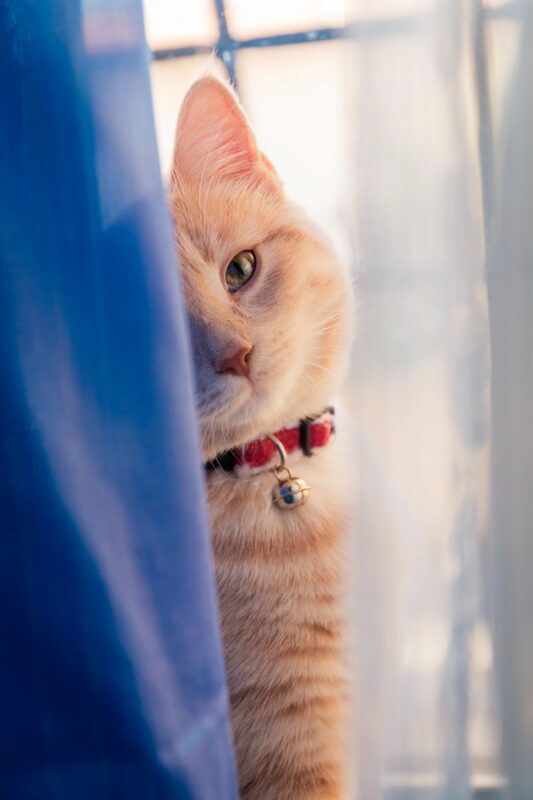Diagnosing Cushing’s Disease in Cats
Posted: 06/23/2022 | BY: Jenna Bruce | Categories: Cat , Vets
While it is more common for dogs to develop Cushing’s disease, cats can also develop this disorder. The cats at highest risk for Cushing’s tend to be older female cats. In this article we’ll explain what Cushing’s disease is, causes, symptoms and treatment options.
What is Cushing’s Disease?

Cushing’s disease is named after Harvey Cushing, an American neurosurgeon who first documented the disease in people in 1932. Cushing’s refers to a condition where the adrenal glands, which sit atop the kidneys, produce too much cortisol.
You may have heard of cortisol referred to as a “fight or flight” hormone. This is because cortisol is produced and released during times of stress or perceived danger. Cortisol is also used by the body normally to manage weight, regulate blood sugar and reduce inflammation.
Causes of Cushing’s Disease
The production of cortisol inside the adrenal glands is regulated by another gland called the pituitary gland. The pituitary, in people and cats, sits at the base of the brain. The pituitary gland will release a hormone called adrenocorticotropic hormone (ACTH). This hormone sends a signal to the pituitary to make cortisol.
The most common cause of Cushing’s disease in felines is a tumor that is growing on or in the pituitary gland in the brain. This tumor growth results in an overproduction of ACTH, and thus an overproduction of cortisol.
Another cause of Cushing’s in cats is a tumor growing in the adrenal gland itself, causing the gland to stop functioning properly.
Cats who are taking oral or intravenous steroid medications for other conditions are more susceptible to developing Cushing’s disease. If your cat is currently taking steroid medication, it’s important that you speak with your vet if you notice any symptoms of Cushing’s developing.
Symptoms of Cushing’s Disease in Cats

Cats are stoic, meaning they tend to hide or mask symptoms when they are sick. In addition, the symptoms of Cushing’s in cats are often very subtle, and so it is quite difficult to detect the disease in the early stages.
Having said that, there are symptoms that point to a possible diagnosis of Cushing’s:
- Delicate skin that may easily bruise and open
- Patchy hair loss
- Excessive drinking and urination
- Increased appetite and potential weight gain
- Diarrhea and vomiting
- A potbelly appearance
- Curling of the tips of the ears
Should you notice any of these symptoms it is important to get your cat in to see your veterinarian as soon as possible. As with other diseases, the sooner you detect Cushing’s, the better the prognosis for your sweet fur baby!
Diagnosing Cushing’s Disease in Cats

Diagnosing Cushing’s disease in cats can be a bit tricky as many of the symptoms are similar to those found with other diseases and conditions. The majority of cats diagnosed with Cushing’s disease also have diabetes. This helps many vets focus in on a proper diagnosis.
To help them fully understand what is going on with your cat and correctly diagnose them, your vet will ask you to describe the symptoms in detail. He or she will also perform a thorough hands-on physical exam, as well as order diagnostic testing such as bloodwork and urinalysis.
Treating Cushing’s Disease in Cats
The most common treatment for Cushing’s disease in cats is surgery to remove one or both of the affected adrenal glands. Post-surgery, your fur baby will need to take medication for the rest of their life to offset the loss of their adrenal gland(s).
If your vet spots tumors on the adrenal glands, they will have a biopsy sent off to a lab to test for cancer. If the tumors are cancerous, your cat may need additional treatment protocols to take care of any cancerous cells that may have spread to other parts of the body.
Each cat is different and therefor their treatment for Cushing’s will be different. For instance, your vet may find the adrenal glands are healthy but your cat’s pituitary gland has growths and will need to be removed. This is usually a last-resort treatment, as removing the pituitary gland is very challenging and risky and can put your cat under a lot of stress. When possible, vets usually perform radiation therapy on the pituitary gland to eliminate any tumorous growths.
There are medications that can treat Cushing’s disease, though these tend to be more effective in dogs than cats. These medications work by suppressing the production of cortisol in the adrenal glands. As it’s not a cure for the disease, your cat would need to be on this medication for life. Speak with your vet to see if your cat would be a good candidate for drug therapy.
Prognosis

If your cat is diagnosed with Cushing’s disease, your first question will likely be how long they can live with this condition. That really depends on the cause of the disease, how early it is detected, and the right type of therapy your vet prescribes. Some cats do very well with treatments and go on to live many more years with a good quality of life. Some cats may not have as positive a prognosis, particularly if the disease is a result of a cancerous growth.
Helping Your Cat Get the Very Best Care
We want our cats to be young and healthy forever, so getting a prognosis of any disease is not ideal. What can makes matters worse is wanting so desperately to do everything you can to extend your fur baby’s life, but not being able to afford to get them the very best treatment.
When you look at treatment options for Cushing’s disease in cats, you’re looking at medical testing, potential surgery and/or radiation therapy and a lifetime of prescription medications. This all adds up to some very big vet bills.
At Pet Insurance Review, we believe healthcare for our fur babies should be affordable. No one should have to be sad about their pet’s illness and then feel anxiety about paying the vet bill on top of it! That’s why we started this company.
We search the marketplace to bring you only the most comprehensive pet insurance plans. Did you know some plans can reimburse you for up to 90% of the vet bill?
A diagnosis of Cushing’s doesn’t have to be the end of the world. There are treatments available that can help your precious cat live more healthy and happy years with you. And the right insurance plan will help you give your cat the best care.
Don’t let high vet bills stop you from providing the care your cat deserves. Get a free quote today.
References:
- The Cushing Center; Yale’s Harvey Cushing/John Hay Whitney Medical Library. Retrieved from: https://library.medicine.yale.edu/cushingcenter/harvey-cushing
- Retrieved from the Cleveland Clinic website: https://my.clevelandclinic.org/health/articles/22187-cortisol
- Cushing’s Disease in Cats. Retrieved from: https://www.petmd.com/cat/conditions/endocrine/c_ct_Hyperadrenocorticism
- Can Cats Get Cushing’s Disease? Retrieved from: Carolina Veterinary Specialists https://www.matthews.carolinavet.com/site/pet-health-blog/2020/10/30/cats-cushings-disease
Disclaimer
The information contained on this blog is intended for informational and educational purposes only and should not be construed as medical advice. It is not a substitute for professional veterinary care. Always consult with your veterinarian before making any changes to your pet's health care or treatment plan.
The authors of this blog are not veterinarians and do not claim to be experts in pet health. The information provided here is based on our own experiences and research, as well as information from reputable sources. However, we cannot guarantee the accuracy or completeness of this information.
We encourage you to do your own research and consult with your veterinarian before making any decisions about your pet's health.
Previous post
7 Subtle Signs Your Cat is SickCompare top pet insurance providers plans.
Enter your dog’s age in years and months to calculate their age equivalent to human years.
Calculate your dog’s ageEnter your cat’s age in years and months to calculate their age equivalent to human years.
Calculate your cat’s age